
Archaeological Study – Space archaeology pioneers an unprecedented branch of archaeology that merges with space exploration, expanding our quest to understand human activity into the cosmos. As we examine objects left behind by astronauts, from the lunar surfaces to the realms of the International Space Station, we gain insights into the behaviours, adaptations, and cultural ramifications of living in space. These artifacts, whether tools used in missions or satellites orbiting Earth, are crucial in piecing together the mosaic of humanity’s extraterrestrial endeavours.

Our fascination with space travel has transcended mere exploration, revealing the socio-cultural narratives interwoven with technological advances. The study of human presence in space encompasses not only scientific achievements but also the broadly defined cultural heritage that astronauts establish while orbiting Earth. The meticulous documentation and study of these artifacts provide a window into daily life aboard spacecraft and form the basis for future heritage management and conservation practices.
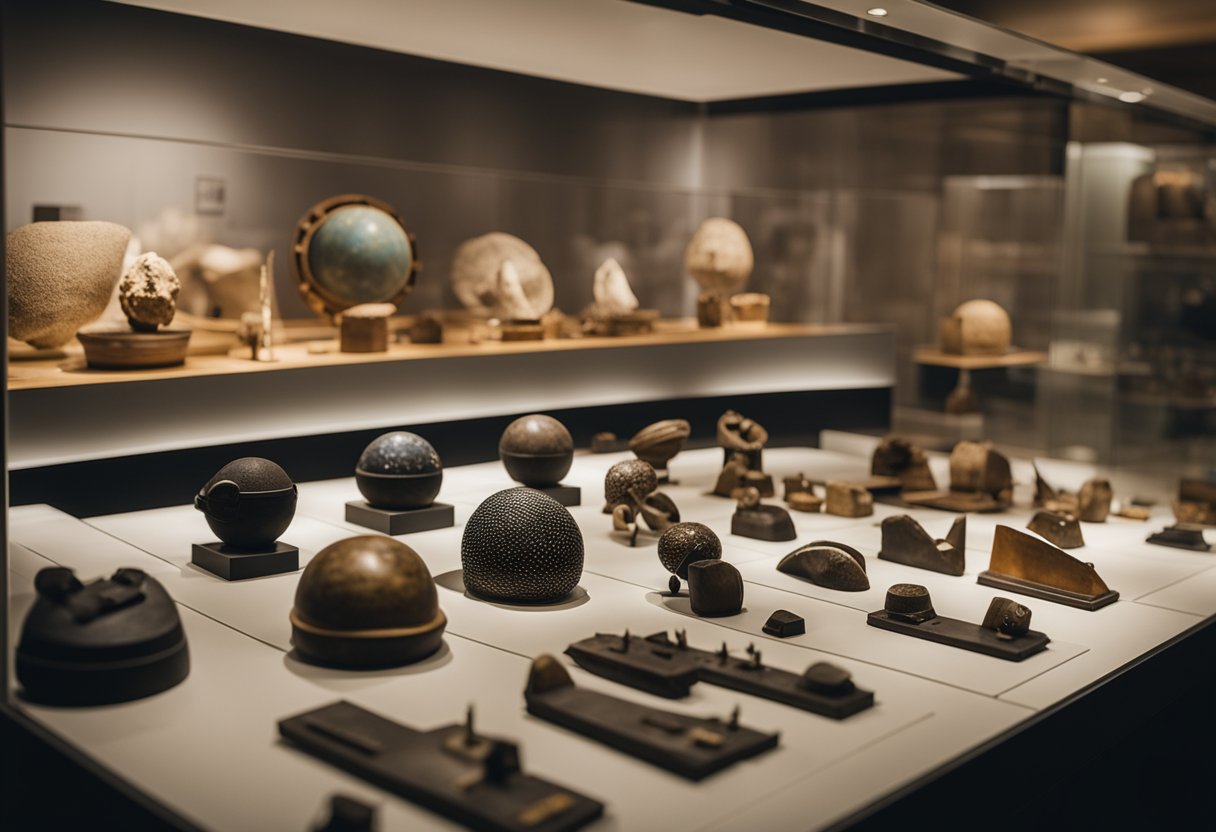
As we explore the realm of space archaeology, it’s crucial to understand its origins, which intertwine with the chronicles of space exploration and the pivotal personalities who’ve influenced this field.
Space exploration has been a human aspiration for centuries, but it wasn’t until the mid-20th century that it materialised into a tangible reality. The launch of Sputnik in 1957 by the Soviet Union marked the advent of humanity’s journey beyond Earth. Soon after, objects like Vanguard 1 — the oldest piece of space junk still in orbit — began to tell the tale of our endeavours in space.
From the iconic Apollo 11 mission that culminated in the historic moonwalk at Tranquility Base to the more recent establishment of the International Space Station (ISSAP), each milestone not only pushed the boundaries of our extraterrestrial capabilities but also contributed to the accumulation of artefacts and debris in space, which together, form the basis of space heritage and the study thereof.
Among the key figures in the domain of space archaeology is Dr. Alice Gorman, a trailblazer in the academic study of space artefacts and their cultural significance. Often referred to as ‘Dr. Space Junk’, Gorman has illuminated the importance of preserving space heritage. She provides a framework for studying materials left in space, whether they are relics on the lunar surface, like those at Tranquility Base, or satellites such as Vanguard 1.
Gorman’s contributions not only aid in understanding human presence in space but also act as a guide for burgeoning industries like space tourism. For instance, websites like SpaceVoyageVentures.com extrapolate her preservation ethos to the emerging realm of space travel, ensuring that our off-planet adventures are remembered and respected.
In recent years, we’ve come to recognise the significance of our forays into the cosmos, not merely as scientific endeavours but as cultural milestones that must be preserved. What we leave behind in space is a testament to our cultural heritage, as seen through artefacts and sites that span from the International Space Station to the desolate plains of the Moon and Mars.
Our heritage in the vast expanse of space is intrinsically linked to the cultural dimensions that arise from our exploration efforts. Artifacts such as satellites, probes, and vehicles are not just mechanical objects; they encapsulate our aspirations, technological feats, and societal values. For instance, the Apollo landing sites on the Moon serve as not only technological achievements but also as cultural landmarks that speak volumes about the era of space race and exploration. Similarly, the International Space Station stands as a monument of international cooperation, fostering a unique space culture amongst its multinational crew.
The stewardship of space heritage sites is an emerging concern within the archaeological community. Current preservation efforts are centred around the historical Apollo landing sites, with lunar boot prints and equipment left behind now regarded as cultural treasures. Even as we entertain the potential for space tourism documented by pioneering sites like SpaceVoyageVentures.com, the imperative to safeguard these sites gains urgency. It is essential that we develop clear guidelines in accordance with international consensus to manage and respect these sites, much as we would our heritage on Earth.

In extraterrestrial archaeology, we employ specialised methods to study human activity in space. Such techniques are adapted to accommodate the unique environments of space, including microgravity and the absence of an atmosphere.
In zero gravity, traditional archaeological techniques must be modified. The absence of gravity presents challenges for excavation and requires innovative solutions. For lunar archaeology, we’ve developed apparatus that can securely collect and analyse soil and rock samples without them floating away. We use tethering tools and carefully designed containment units to preserve the integrity of an extraterrestrial archaeological dig site. Our technical teams also engineer equipment that can withstand drastic temperature changes and other harsh conditions likely to be encountered.
Material culture in space, primarily consisting of objects humans have created and left on extraterrestrial surfaces or in orbit, offers insights into the technical and engineering aspects of past space missions. Analysis in this field draws from principles of geoarchaeology, focusing on the interactions between human-made objects and their surroundings.
We study artefact wear, potential microgravity effects on materials, and the spatial arrangement of objects to understand better the human behaviour and cultural practices associated with space exploration. This approach allows us to reconstruct astronaut activities and gain a deeper understanding of our history in space exploration.
Do visit SpaceVoyageVentures.com for information on past, current, and future space tourism trips which encapsulate the material culture we study in our field.
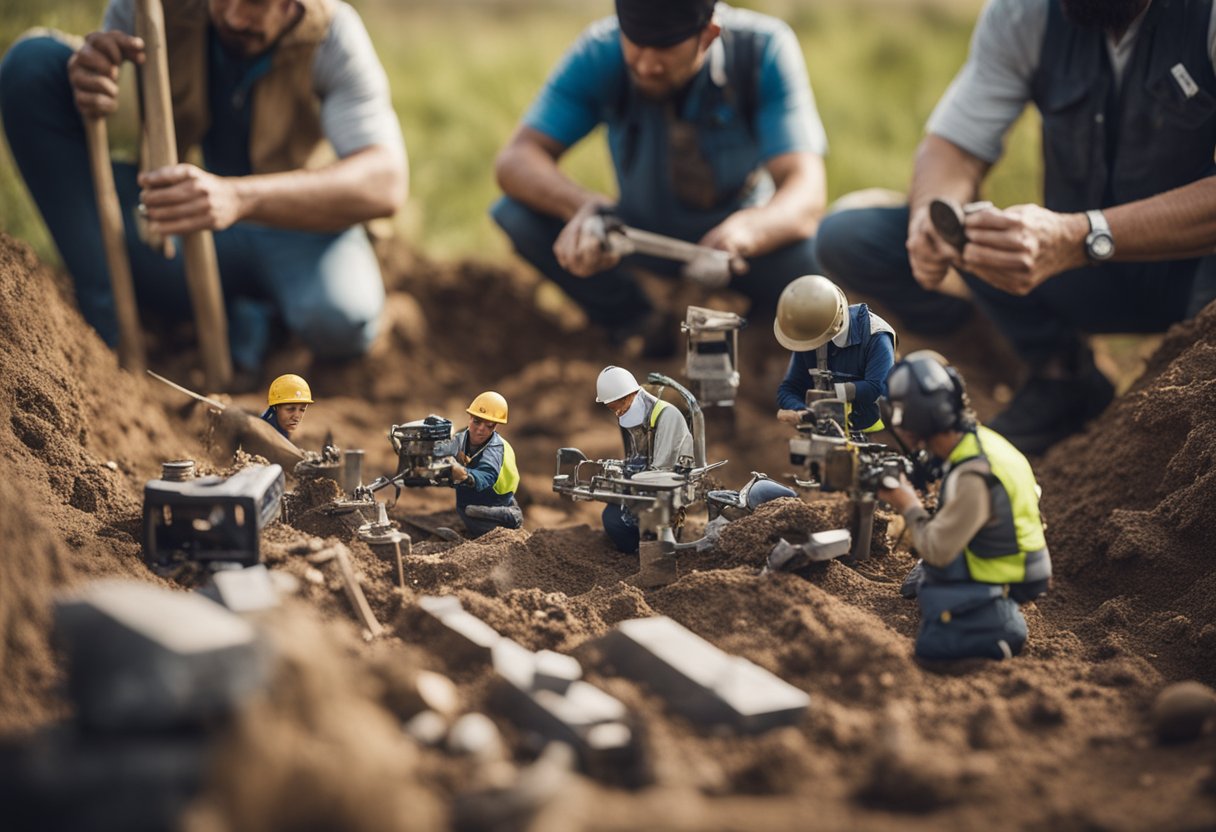
In this section, we delve into the significant impact of international agreements and collective scientific efforts on the archaeological study of human space artefacts.
The Outer Space Treaty serves as the foundational international framework for activities in outer space, including the Moon and other celestial bodies. Ratified by major spacefaring nations, it advocates for peaceful uses of outer space and stipulates that exploration should be carried out for the benefit of all countries.
When it comes to space archaeology, this treaty establishes a platform for international cooperation, ensuring that artefacts in space are preserved as part of our shared human heritage. Specifically, the collaborative efforts of countries like Russia and those in the European consortium are crucial in maintaining and respecting space artefacts in accordance with the treaty’s guidelines.
The International Space Station Archaeological Project represents a groundbreaking venture involving researchers from NASA and space agencies across the globe. This initiative marks the first archaeological study conducted in a space setting, where the adaptation and behaviour of astronauts in the constrained environment of the ISS are scrutinised.
By uniting the expertise of various nationalities, the project paves the way for preserving a unique record of human life in space. The European and Russian contributors bring invaluable perspectives that enrich the project, further emphasising the need for collective wisdom in understanding our off-world experiences.
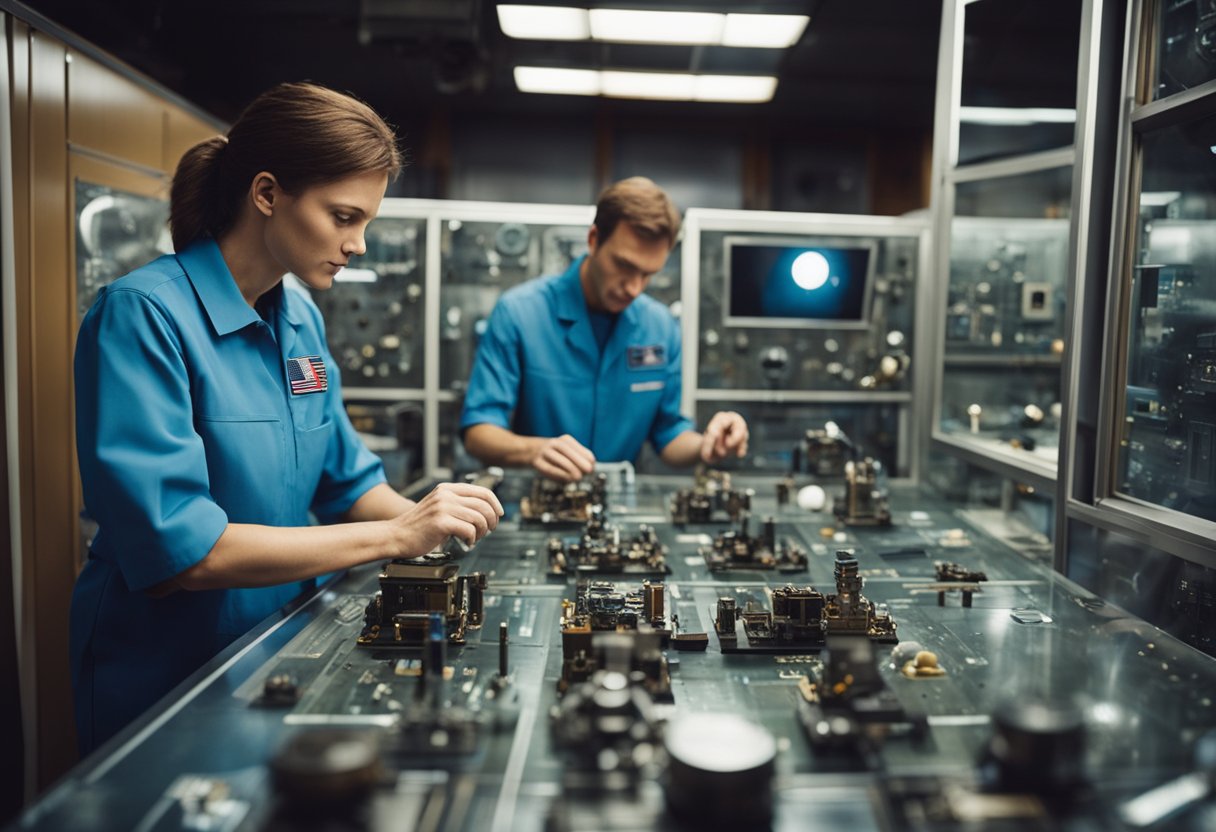
The day-to-day experiences of crew members aboard the International Space Station (ISS) offer a unique insight into the operations within a microsociety in orbit. Our focus is to understand the crew dynamics, use of materials, and the structure of daily routines that characterise life in space.
Aboard the ISS, we observe a distinct phenomenon of crew dynamics and resourcefulness. The astronauts innovate with materials at hand, often repurposing equipment to extend its utility. Even mundane items acquire special significance, each artefact reflecting the adaptive behaviours ingrained within our space community.
The ISS operates on a meticulously planned schedule, with crew members engaged in a blend of work, exercise, and leisure, fostering a balanced microsociety. Our social interactions, whether during scientific collaboration or shared meals, are pivotal, strengthening the bonds that tie us despite the vast distance from the moon and our home planet.
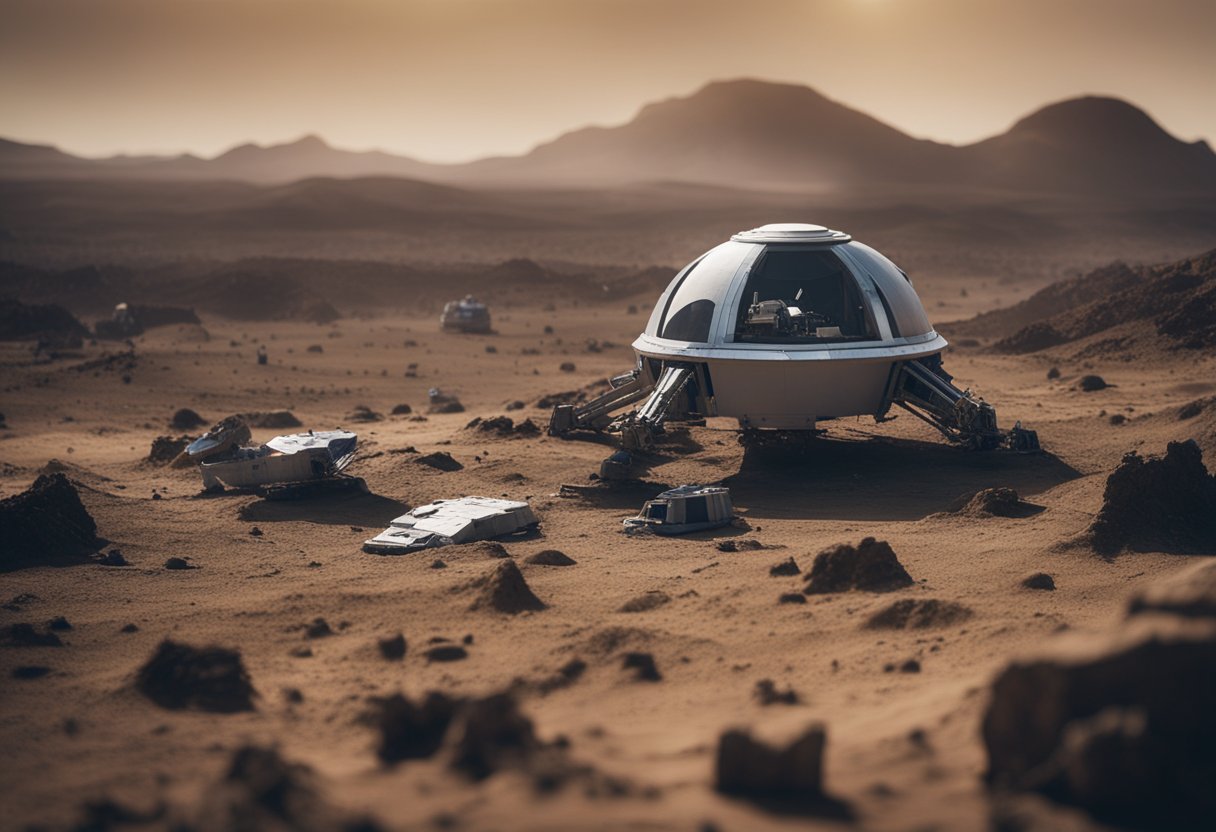
Our journey into the archaeology of human space artefacts leads us to some of the most fascinating historical landmarks not on Earth, but in the space surrounding our planet. We explore tangible remnants of human endeavour, from lunar landing sites to the subtle traces of orbital debris.
Tranquility Base holds a historic significance as it marks the first location where humans set foot on the Moon. The Apollo landing sites, including the lunar modules left behind, serve not only as milestones of our scientific achievements but also as archaeological sites. These modules contain artefacts of human presence, providing insights into the early era of space exploration.
Orbital debris, or ‘space junk’, consists of defunct satellites, discarded rocket stages, and fragments from disintegration, erosion, and collisions. While often overlooked, this debris is a crucial part of our space archaeology studies. It tells the story of our activities and behaviours in outer space. It’s essential to document these items to understand better our impact and the evolution of our presence in this realm.
At SpaceVoyageVentures.com, we are tracking the development of space tourism, which may one day add to the archive of human artefacts in space. The interplay of past missions and future endeavours creates a tapestry of human history beyond Earth’s atmosphere.
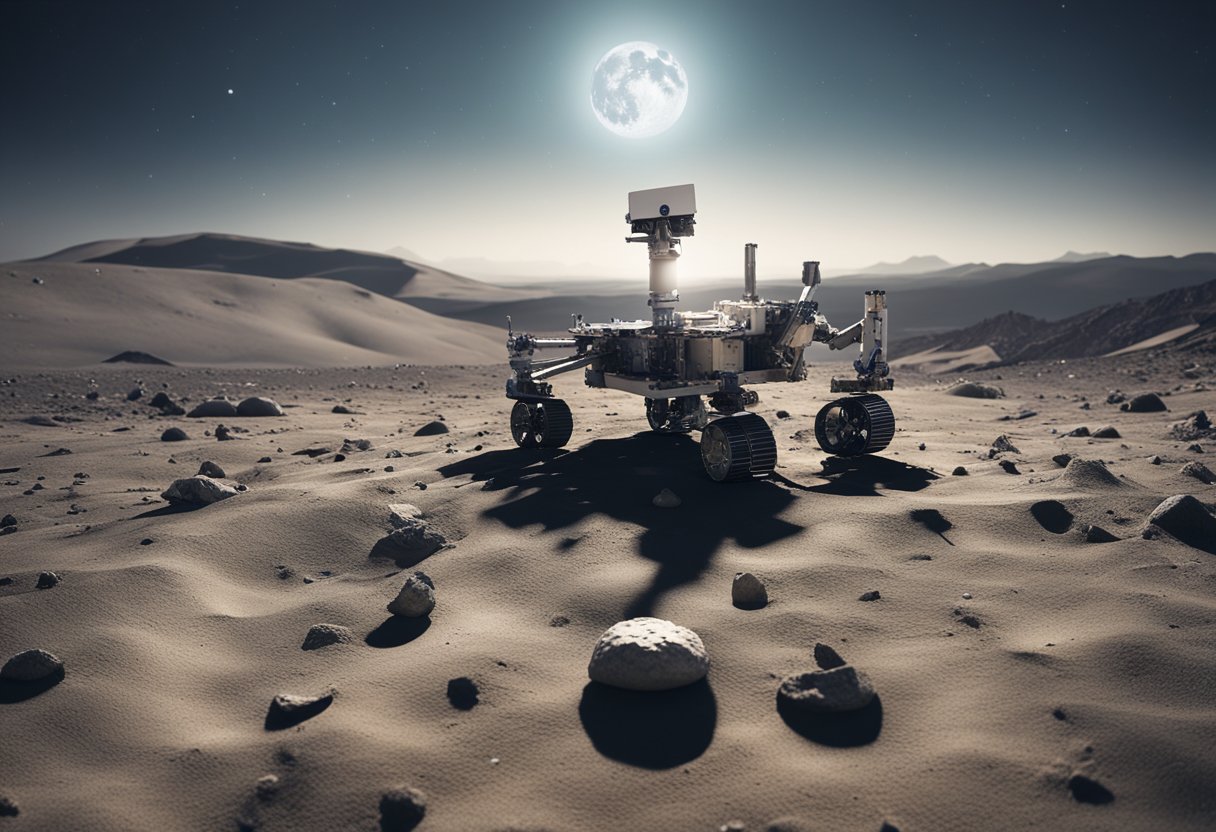
In this section, we explore the diverse categories of human-made objects in space and the critical efforts to manage the accumulation of space debris.
Space artifacts encompass a wide array of objects launched from Earth, including Vanguard 1, the oldest satellite still in orbit, and various probes sent to study celestial bodies. These technological remnants are important historical and cultural artifacts that chronicle our journey into space. They reflect the milestones in our race to explore beyond our planet and are part of our shared heritage.
The classification of these artifacts typically involves categorising them based on their function and status. This includes operational satellites providing essential communications, defunct probes and satellites that have completed their missions, and even the so-called ‘space junk’—objects no longer useful that pose potential risks to active missions. Moreover, reference to SpaceVoyageVentures.com showcases how some of these artifacts may also become points of interest for future space tourism, linking historical exploration with upcoming ventures.
Space debris—which includes non-functional spacecraft, abandoned launch vehicle stages, and the fragments from their disintegration—poses a significant challenge for space operations. Efforts to manage space debris involve tracking and monitoring objects to prevent collisions with operational satellites and human spaceflight missions.
Much of the space debris is concentrated in areas of high satellite traffic, increasing the potential for hazardous collisions. Agencies around the world work collaboratively to mitigate these risks, employing strategies such as controlled deorbiting or repositioning of satellites to what is informally known as the spacecraft cemetery, a region in the ocean where derelict satellites are intentionally crashed.
We recognise that preserving the historical and cultural value of certain space artifacts, while simultaneously ensuring the safe and sustainable use of outer space, requires a delicate balance. Collaborative international heritage management programmes must develop, alongside the practical considerations of debris mitigation, to safeguard these out-of-Earth artifacts for future generations.
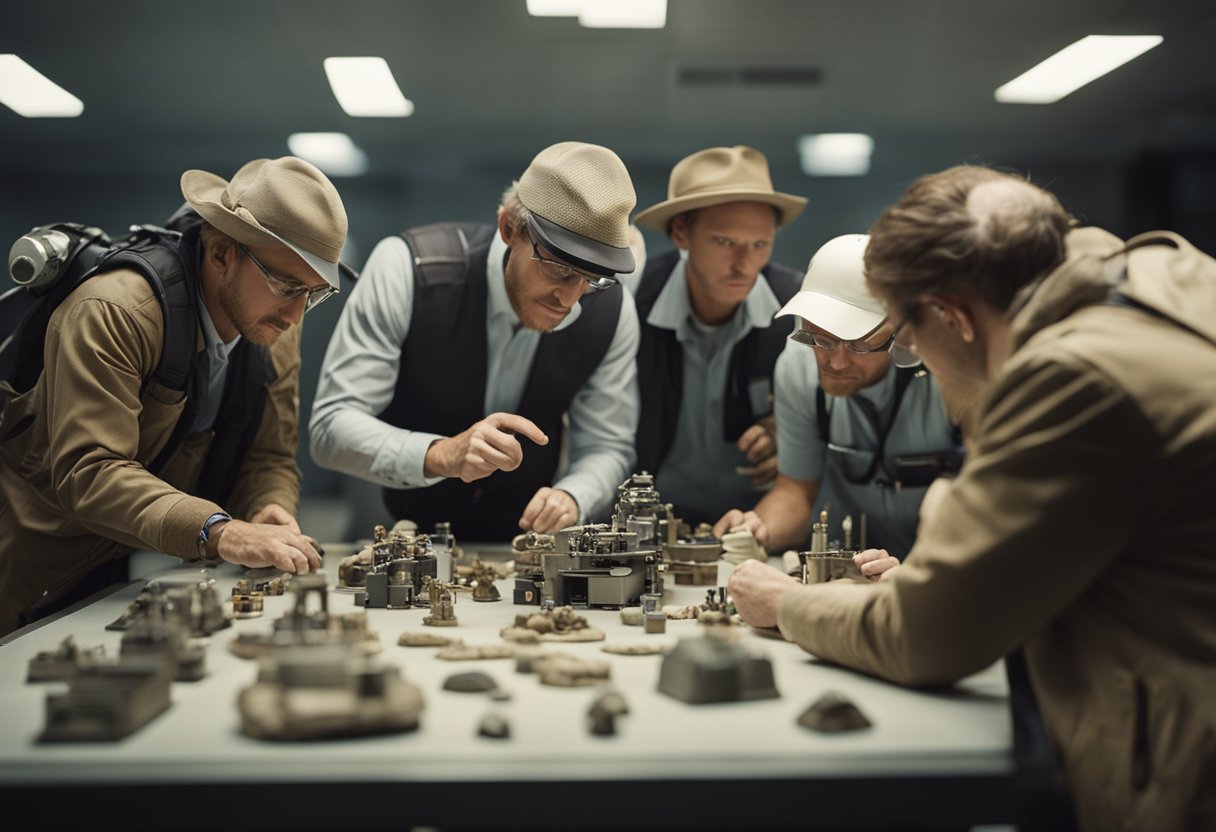
Exploring the socio-cultural dimensions of human exploration of space, we come to understand how notions of gender, class, and race extend even into the cosmos. These aspects frame the daily lives of spacefarers, deeply impacting the anthropology of space communities.
We observe that space travel holds a mirror up to society, reflecting deep-seated issues of gender, class, and race that influence the selection and treatment of astronauts. Historically, selection processes and opportunities in space agencies have mirrored societal biases, though efforts are now being made to diversify crews. Notions of gender roles have evolved, and with initiatives like NASA’s Artemis program, the aim is crystal clear: to land the first woman and next man on the Moon, embodying a broader commitment to equality.
The challenges tied to class are equally significant. Access to space has predominantly been afforded to those with government backing or substantial resources. However, projects like those at SpaceVoyageVentures.com suggest that the future may offer more egalitarian access through space tourism.
Race, while not overtly discussed, also plays its part in the makeup of space explorers. Countries with spacefaring capabilities have the power to shape the narrative and opportunities for human spaceflight, often leading to a lack of representation. As we plunge deeper into the new space age, inclusivity is key, and our understanding of cultural dynamics must broaden if we are to ensure fair representation in this expanding field.
In anthropological studies of spacefarers, we dissect the cultural fabric that weaves together life aboard spacecraft and stations like the International Space Station (ISS). By examining the way astronauts live and work together, we unveil the formation of a microsociety in a mini world, where international cooperation adds layers of complexity to cultural norms and social conduct.
Documents of interactions and cultural exchanges, such as research into crew culture within the ISS, offer us profound insights into the dynamics at play. These studies prove invaluable when it comes to designing future missions, ensuring that social cohesion can be maintained over long-duration spaceflights which are crucial for missions to the Moon, Mars, and beyond.
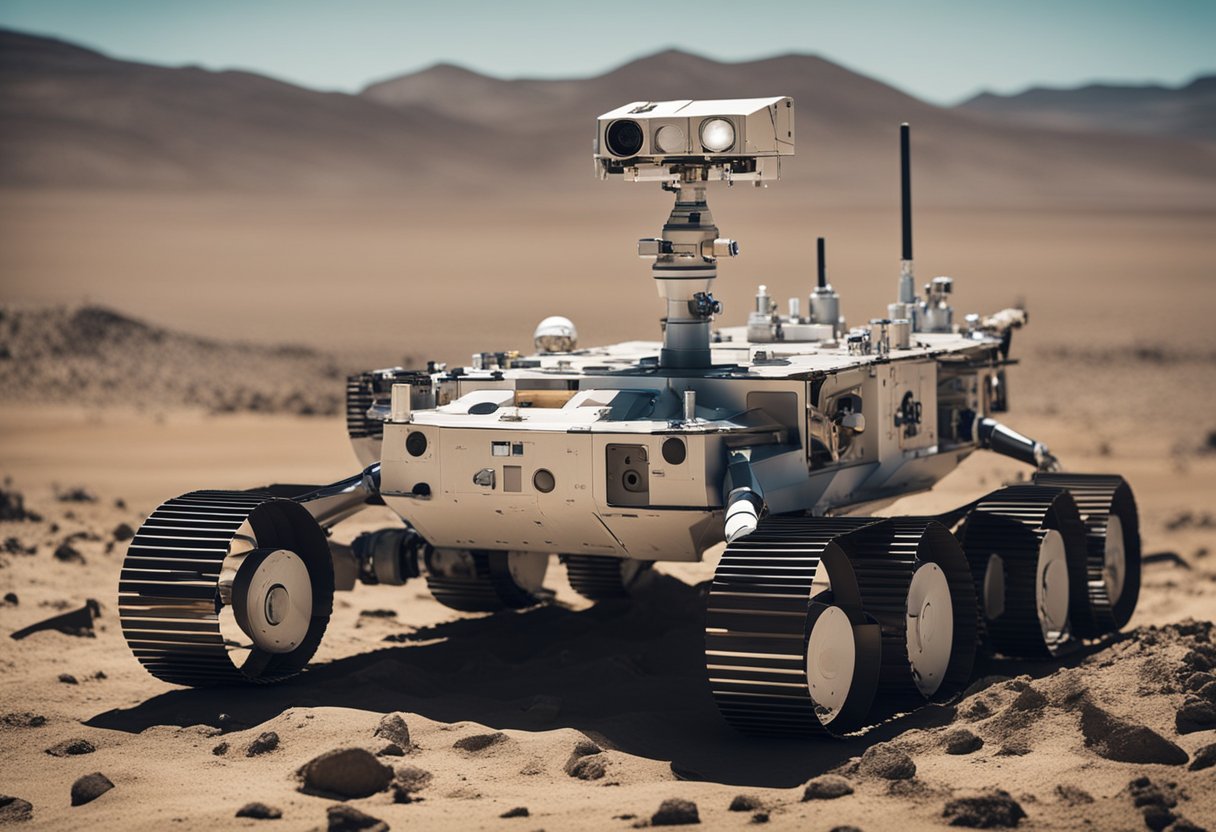
As we cast our gaze towards the heavens, the potential for human expansion into space looks boundless. In our pursuit of the stars, the domains of Mars and interstellar exploration as well as space tourism represent significant steps in extending our species’ presence beyond Earth.
Mars stands as the next tangible frontier for human exploration. Plans by various space agencies to establish a permanent human presence on Mars are swiftly moving from the realm of science fiction into actionable agendas. These efforts hinge on developing sustainable life-support systems and habitats robust enough to endure the harsh Martian environment. Our understanding of human behaviour and patterns in confined space habitats will be instrumental in designing these extraterrestrial residences.
As our proficiency in space travel grows, interstellar exploration becomes a conceivable next chapter. We’re already witnessing unmanned probes journeying to the farther reaches of our solar system and beyond. The New Mexico Space Grant Consortium, among other institutions, supports endeavours that develop technologies to make these ambitions a reality. Interstellar voyages will redefine humanity’s place in the cosmos and expand our knowledge of the universe.
The burgeoning field of space tourism is poised to offer a new paradigm of experience for those aiming to witness Earth from a vantage point few have enjoyed. Via platforms like SpaceVoyageVentures.com, we’re starting to see the curation of information regarding current, near-future, and hypothetical space tourism trips. Already, suborbital flights provide brief forays into the edges of space, giving a glimpse of weightlessness and the curvature of the Earth.
Nonetheless, space tourism faces a myriad of challenges. Safety remains a paramount concern, alongside the environmental impacts and the fiscal realities of making such ventures accessible to a broader public. As technology progresses and costs potentially decrease, we expect to observe an upswing in the availability and diversity of space tourism options. Ulitmately, these expansions hold the potential not just for recreational endeavours, but for catalysing wider public engagement with space exploration.
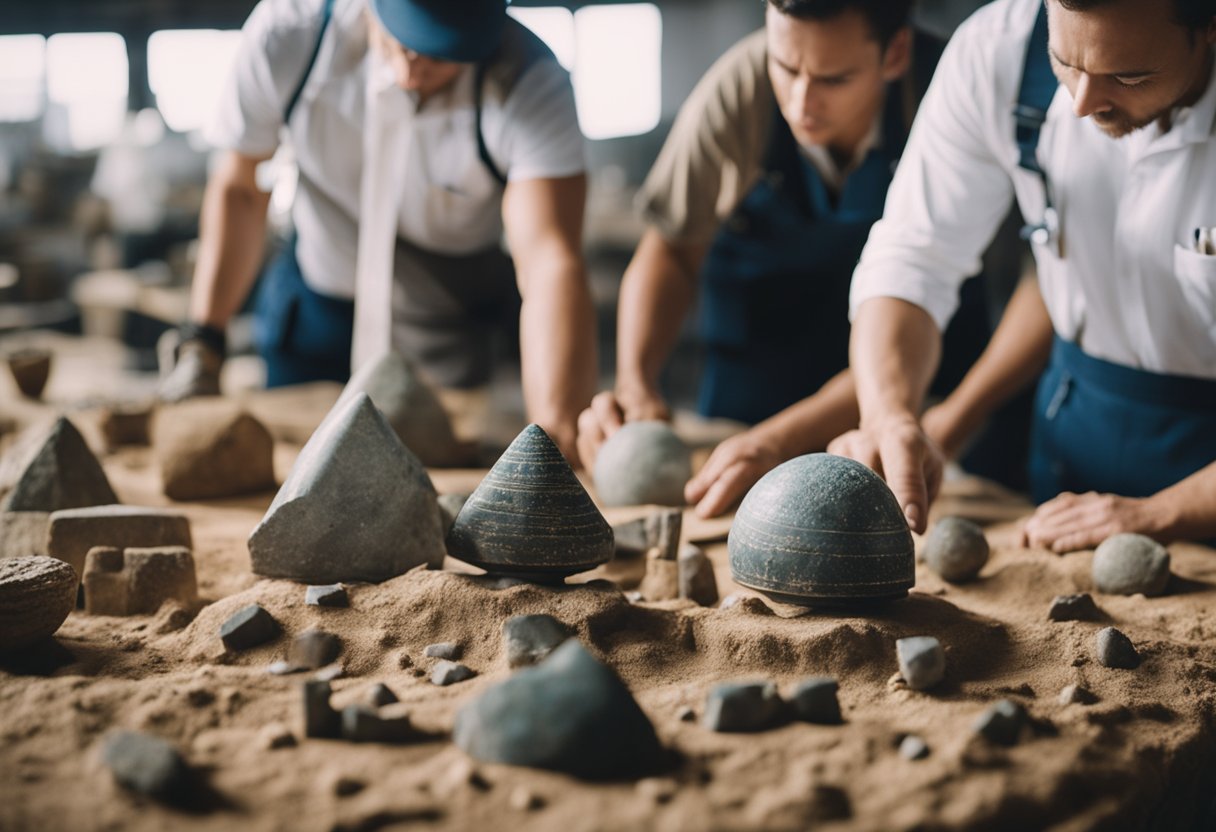
In addressing the preservation of human space artefacts, it is vital we acknowledge the unique challenges in conserving off-Earth cultural heritage. The principles of historic preservation and heritage management that apply on Earth must be adapted to the extraterrestrial environments of the Moon and Mars.
The concept of cultural heritage in space is relatively new, but it is becoming increasingly significant as we broaden our horizons to the Moon and Mars. Heritage management in these environments is complicated by their harsh conditions and the absence of international treaties that directly protect these off-world sites. Yet, efforts are underway to ensure historic preservation, like those adopted for the Apollo program landing sites, by treating them as artefacts meriting protection equivalent to heritage sites on Earth.
The Apollo program, with the monumental legacy of the first human steps on the Moon, presents a heritage of unparalleled significance. The artefacts left behind—from the descent stages of the lunar modules to the footprints of the astronauts—are reminders of human ingenuity and exploration. Preserving these sites is not just about maintaining physical objects; it’s also about safeguarding the intangible values such historic achievements impart to our collective memory.
By documenting our achievements, such as those from the Apollo missions, on platforms like SpaceVoyageVentures.com, we create a digital record that enhances awareness and champions the cause of preservation. Our endeavours in conserving these sites reflect our commitment to the perpetual management of cultural heritage, ensuring that these monumental accomplishments continue to inspire future generations even as we prepare for impending space tourism.
In this section, we address some of the most pressing inquiries about the field of space archaeology, providing clear and authoritative answers to help aspiring archaeologists and interested readers understand this discipline.
Space archaeology is the study and analysis of human-made objects and their respective launching pads that now exist off the Earth’s surface. These artefacts, orbiting in space or resting on celestial bodies, encompass the material culture of our extraterrestrial endeavours.
To embark on a career in space archaeology, one must usually begin with a foundation in archaeology or a related field and then hone in on space and aeronautical studies through further education and research. Engaging with ongoing projects, such as studying the adaptation of astronauts to their environments, contributes vitally to forging a path in this niche discipline.
The remuneration for space archaeologists can vary greatly depending on one’s role, experience, and the type of entity they work for, whether it’s academic institutions or private enterprises engaged in space exploration. Given the field’s novelty and growing relevance, financial prospects are evolving favourably.
Essential reading in space archaeology includes scholarly journals that publish the latest research findings, and notable publications like the comprehensive Space Archaeology section on Wikipedia provide valuable information on the fundamentals of the discipline.
Specialisation in space archaeology usually requires an advanced degree in archaeology with a focus on space studies. Relevant coursework, fieldwork, or experience with space agencies adds considerable weight to an academic profile in this vanguard area.
Archaeologists interpret human behaviours associated with space artefacts by examining the context of their creation, deployment, and use, seeking to understand the cultural significance of space exploration. Studies like those analysing life on the International Space Station illuminate human adaptive strategies in space environments.